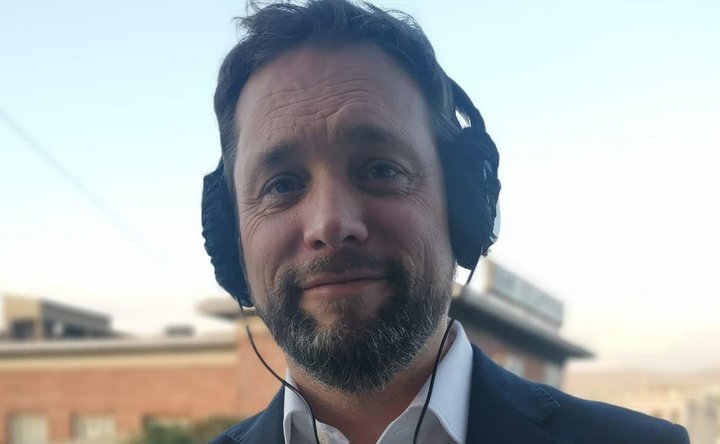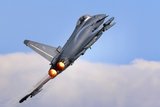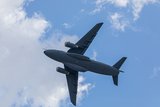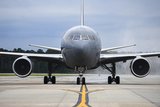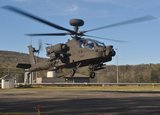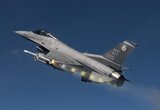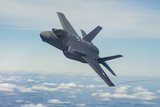Can Russian industry maintain a viable air force?
Russian losses to Ukrainian air defences of Su-34s that were still flying over home territory have been problematic, and current low production rates seem insufficient to make up the numbers. (Photo: Ministry of Defence of the Russian Federation)
The 29th month of the Russian-initiated war in Ukraine marks a grim milestone. A recurring complaint has been the absence of a Russian economic-military-industrial collapse, a scenario widely forecasted by commentators in 2022.
The assumption was that sanctions on critical exports would cripple Russia's economy and military production. This expected collapse has not, however, occurred.
This analytical error is not new. Many countries can endure short- to medium-term exclusion from traditional markets and trading partners. The early 20th-century belief that prolonged European war was impossible due to economic interdependence proved incorrect. Similarly, Putin’s Russia has defied the anticipated trajectory. Conscripting prisoners to support outdated tanks, however, does not indicate a healthy military or economy.
Related Articles
How Russia’s declining arms sales is reshaping the global defence industry
Analysis: How Russia’s precision strike capability is evolving in Ukraine
Can NATO countries succeed in a war against Russia?
The burden of the conflict has largely fallen on Russia’s lower-level ground forces, an area where the country is well resourced. In contrast, its air arms are more complex, with significant dependence on low-technology suppliers and domestic industry limitations, where sanctions indeed have an impact.
Russia’s air arms are by no means dead, but whether they can be sustained is a different question. It has long been a complaint of high-technology operators that modern weapons are simply too complex and without a depth of support and spares are liable to fail, with serious consequences. This is uncomfortable for F-35 operators but it is even worse for the Russian air force and naval aviation.
Russian losses have certainly been disastrous, both in quantity and quality. Su-34 strike aircraft launching weapons from over their own territory simply should not be destroyed by Ukrainian air defences and the fact this this occurs regularly is a significant problem.
Even more worrying is the steady attrition of high-value assets such as the A-50 AEW aircraft, again by Ukrainian ground-based air defence. These were originally in short supply and after two years of war it is even less likely that more can be sourced easily.
High-end electronic components, something for which Russia has never been famous, are a particular bottleneck and harder to find than airframes or engines. Before 2022, there was a healthy dual-use trade in computer parts destined for industry, energy and the military. On the surface, this has ended, but suspicions continue that the blockade is far from watertight.
Is the presumption that a longer war equals reduced aircraft and subsystem production true? The general but caveated answer is yes. This year has seen deliveries of new and repaired Su-34s and Su-35s, but these are likely capped at less than 10 per month, possibly far lower. There is also the question of sufficient spares, without which both new and old aircraft will suffer extremely low availability.
Concurrent with this have been efforts to improve output of multi-role civil aircraft such as the MC-21, although these have been at best mixed. Here, the large number of Western airliners held in the country has mitigated this domestic deficit in second-line transport capability.
Exquisite items such as the A-50 are more problematic. The airframe itself is very old and by comparison with the newer Sukhois was not much developed. The old joke that the Russian military never throws anything away has undoubtedly been of assistance in keeping and perhaps resurrecting older designs, but this limits the capabilities they can provide.
There simply is no replacement for a modern and well-supported AEW fleet. The arrival of Saab 340 aircraft in this role for Ukraine and Poland stands in striking contrast.
The question, then, is how Russia has kept its air arms operational and whether this sustainable for much longer. As with the retention of Airbus and Boeing airliners referenced above, there are ways around problems and sanctions.
The most obvious one is simply sourcing foreign parts and technologies through third parties. China, India and Turkey have been suspected of participation but the entire Central Asian region is an obvious route for low-key traffic.
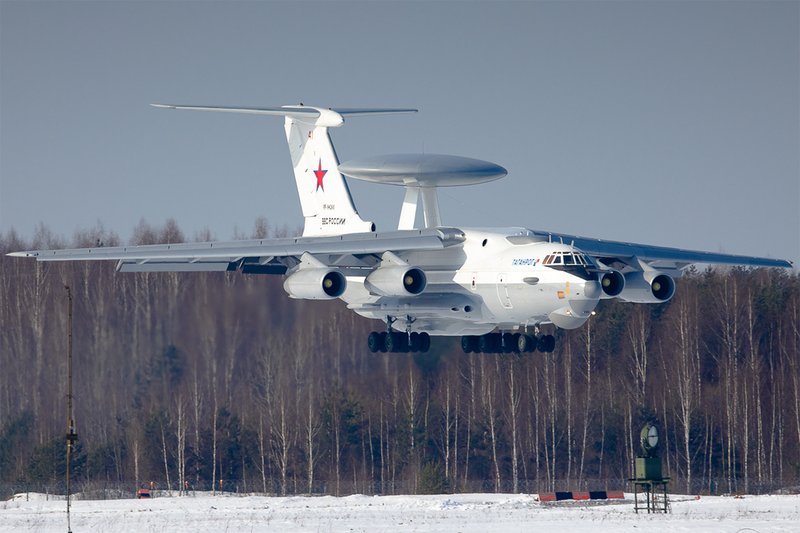
A high volume of elements for modern radars are (or can be) forged from high-end civil computer technology. It is impossible to track all AMD or similar products exported globally and doubtless many may have landed in Russia for use by Irkut and its supply chain. Nevertheless, such tangled paths constrain manufacture and although in one respect their existence represents a failure, sanctions have put limits on systems and weapons output.
One area where the impact may be more direct is new technology. The concurrence of reduced supply and a heavy draw on available Russian resources has undoubtedly hurt the Su-57 and Su-75 programmes. Since these would have limited short-term impact on the conflict, they are a comparative luxury that Putin’s forces will be forced to delay.
The same is likely true of next-generation sensors, systems and weapons, something arguably more serious within a continuously changing battlespace. There is a risk of a downward spiral as Russian aircraft are slow to evolve in the face of new Ukrainian or NATO-supplied weapons, increasing losses, which requires greater production to simply keep pace, and forces the continued use of older systems with lower survivability. Not in itself a strategic catastrophe, but another burden that Russian forces must bear.
That Russia has endless sources of troops and weapons is also a hackneyed trope. The history, on closer examination, is more complicated. The victorious Red Army of 1943–45 was heavily supplied by its Western partners. As well as some weapons, fuel, food, clothing and raw materials were provided in enormous quantities. So, too, were communications equipment and logistics vehicles.
Many core weapons certainly were Soviet-made, but when tools, materials and the trucks to tow them come from Detroit, building tens of thousands of combat aircraft was somewhat easier to accomplish.
This is clearly not a mirror to the current situation, and while some success in Russian defence production is troubling, it should not be overestimated. Artillery shells from North Korea and UAVs from Iran have taken the place of American aluminium, but none of Russia’s allies can make good the complex elements necessary for high-volume production of modern aircraft.
The sanctions are neither bulletproof nor by themselves catastrophic, but they are painful and helping to slow Russia’s ability to make good its high loss rate of valuable weapon systems.
This analysis article originally appeared in June’s Decisive Edge Air Newsletter. To receive regular updates from Edward Hunt and our team of defence experts visit our Decisive Edge sign up page.
Related Equipment in Defence Insight
More from Farnborough Airshow 2024 (FIA2024) | View all news
-
![Eurofighter looks to fly integrated new systems in Typhoon next year]()
Eurofighter looks to fly integrated new systems in Typhoon next year
The first representative Eurofighter Typhoon flew in 1994 and entered operational service in 2003. Two decades later the company is working to ensure the platform’s relevance beyond the middle of the century.
-
![Embraer KC-390 puts on a show for the Mexican Air Force]()
Embraer KC-390 puts on a show for the Mexican Air Force
The KC-390 demonstrator was en route to Brazil after a display at the Farnborough Airshow in the UK.
-
![Israeli Air Force to receive first KC-46A aerial refuelling aircraft in May 2025]()
Israeli Air Force to receive first KC-46A aerial refuelling aircraft in May 2025
The delivery would mark an end to long delays in the programme with additional aircraft expected through to 2027.
-
![Boeing says next stage of Poland Apache deal is close and Chinook may be next]()
Boeing says next stage of Poland Apache deal is close and Chinook may be next
Boeing has seen a renewed demand for the Apache attack helicopter with Poland and Australia becoming customers, while India, the UK, the US, the Netherlands and Egypt have also bought new aircraft or upgraded platforms.
-
![Defence leaders call for strengthened supply chains and highlight security risks at Farnborough]()
Defence leaders call for strengthened supply chains and highlight security risks at Farnborough
Under mostly clear skies, a couple of showers and the roar of the newest variant of Boeing’s venerable F-15, there was a lot of talk at Farnborough International Airshow 2024 about how to make supply chains stronger in the face of high demands and a lingering post-Covid pandemic effect.
-
![Greece joins the F-35 Lightning II world alliance]()
Greece joins the F-35 Lightning II world alliance
Greece has signed an offer for 20 F-35 aircraft with an option on 20 more platforms.







